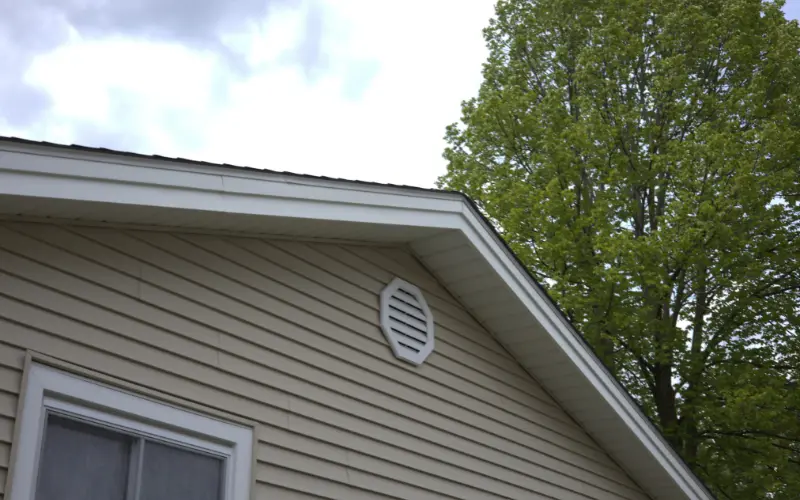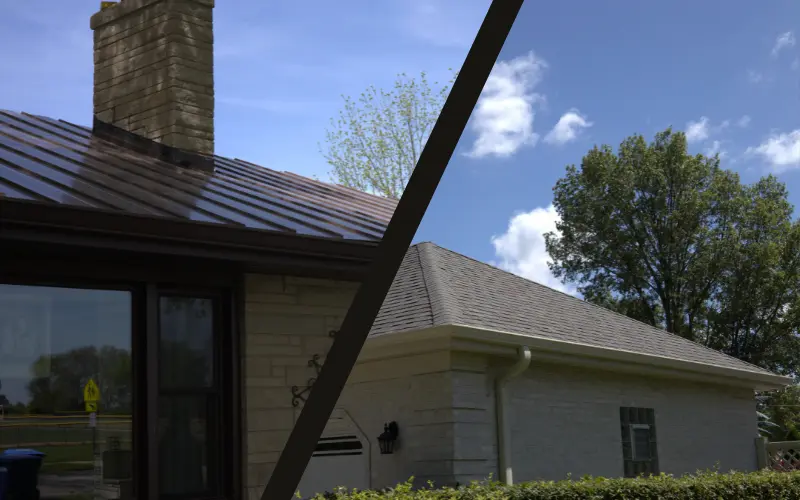Wondering if you should stay home during a roof replacement? The short answer: you can, but it'll be loud, dusty, and disruptive. This guide covers the noise levels, any safety concerns, timeline expectations, and practical steps to protect your property. Learn from one of the must trusted roofing companies in Illinois recommends and how to make the best decision for your household during this major home project.
The Short Answer: You Can Stay Home During A Roof Replacement, But Here's What You Need to Know
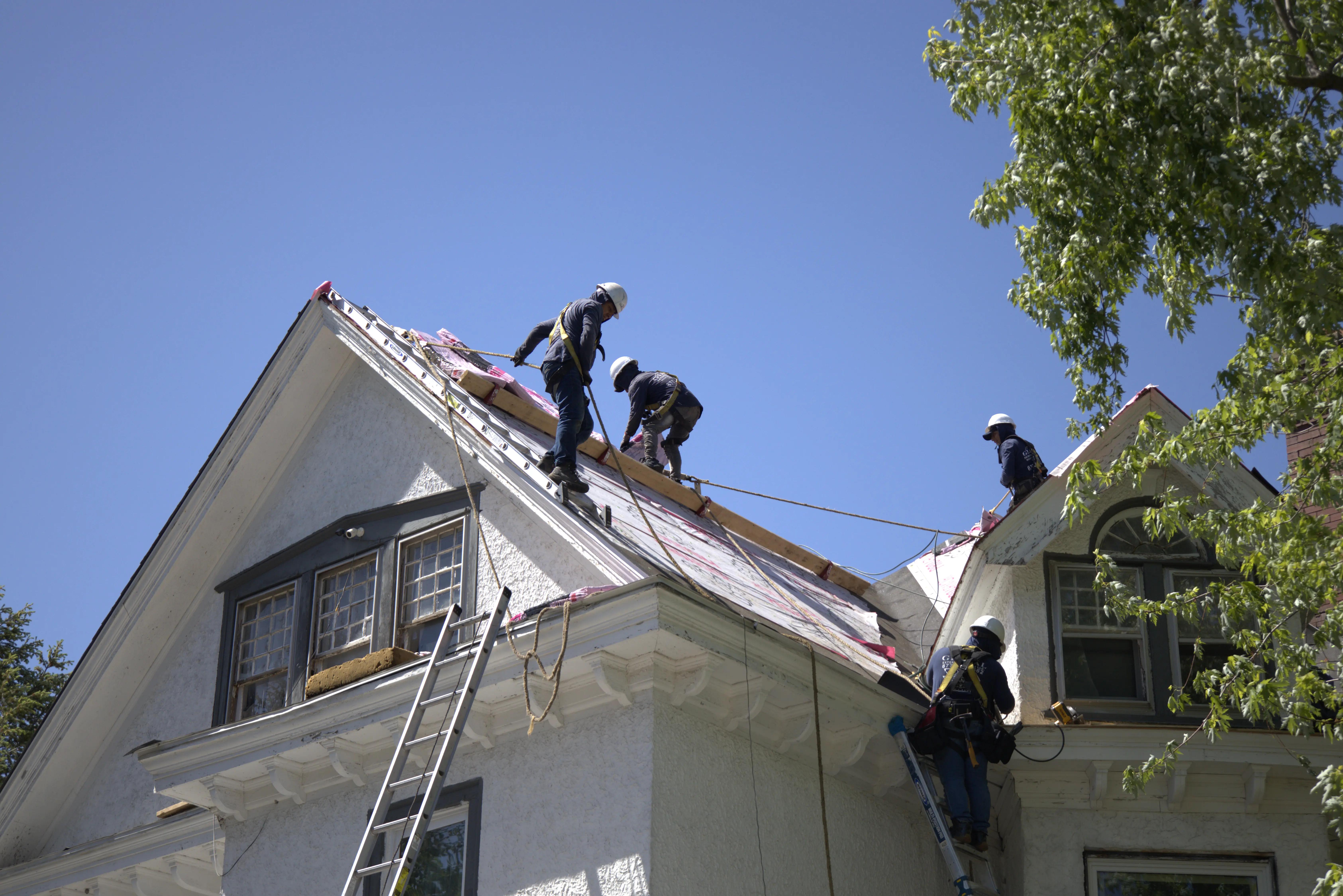
You can absolutely stay home during a roof replacement. Nothing stops you from being home but the real question is whether you'll want to once the work starts.
Here's the reality: a roof replacement is loud, messy, and disruptive. Your home might shake, debris will fall, and a crew will be walking around your property for 8-12 hours (sometimes longer if we hit weather delays, which happens plenty in Illinois). You're welcome to stay but you need to understand what you're signing up for.
Most property owners choose to leave for the day, while some stay and tough it out. Either way works but preparation makes the difference between a smooth project and a stressful one.
Why This Question Matters More in Illinois
Here's the thing about roof replacement in Illinois: our weather doesn't give us many options. You've got a narrow window between the last freeze and the first snow and spring and fall are ideal but those summer thunderstorms can roll in without warning. Winter work is possible but expensive and gets complicated.
When your roofing company finally gets a clear weather window, they'll take it but that might mean your roof replacement happens on a Tuesday when you'd rather be working from home or managing your regular schedule. Illinois weather can force your hand sometimes.
The temperature swings also affect the timeline. A roof replacement that takes one day in July might stretch to two in October when crews lose daylight earlier. Plan accordingly.
The Noise Factor (It's Louder Than You Think)
.webp)
Let's talk about noise. A Roof replacement isn't just background noise. It's not like having the TV on too loud. It's constant banging, scraping, and hammering directly above your head.
The tear off phase is the worst, removing old shingles means pry bars hitting your roof deck, materials sliding off into dumpsters, and the sound of decade old roofing material being ripped away. If your home was built before 1990, there's probably multiple layers up there, which means more noise and more time.
Hand-nailing creates more vibration than pneumatic nailers but both methods are loud enough to rattle pictures on your walls. Two-story homes muffle some sound on the first floor, but anyone working from home will struggle to take phone calls or video meetings. Forget concentration.
Single-story ranch homes (common across Illinois suburbs) get hit with the full impact. Every hammer strike resonates through the structure. Some homeowners describe it as living inside a drum.
Safety Isn't Optional
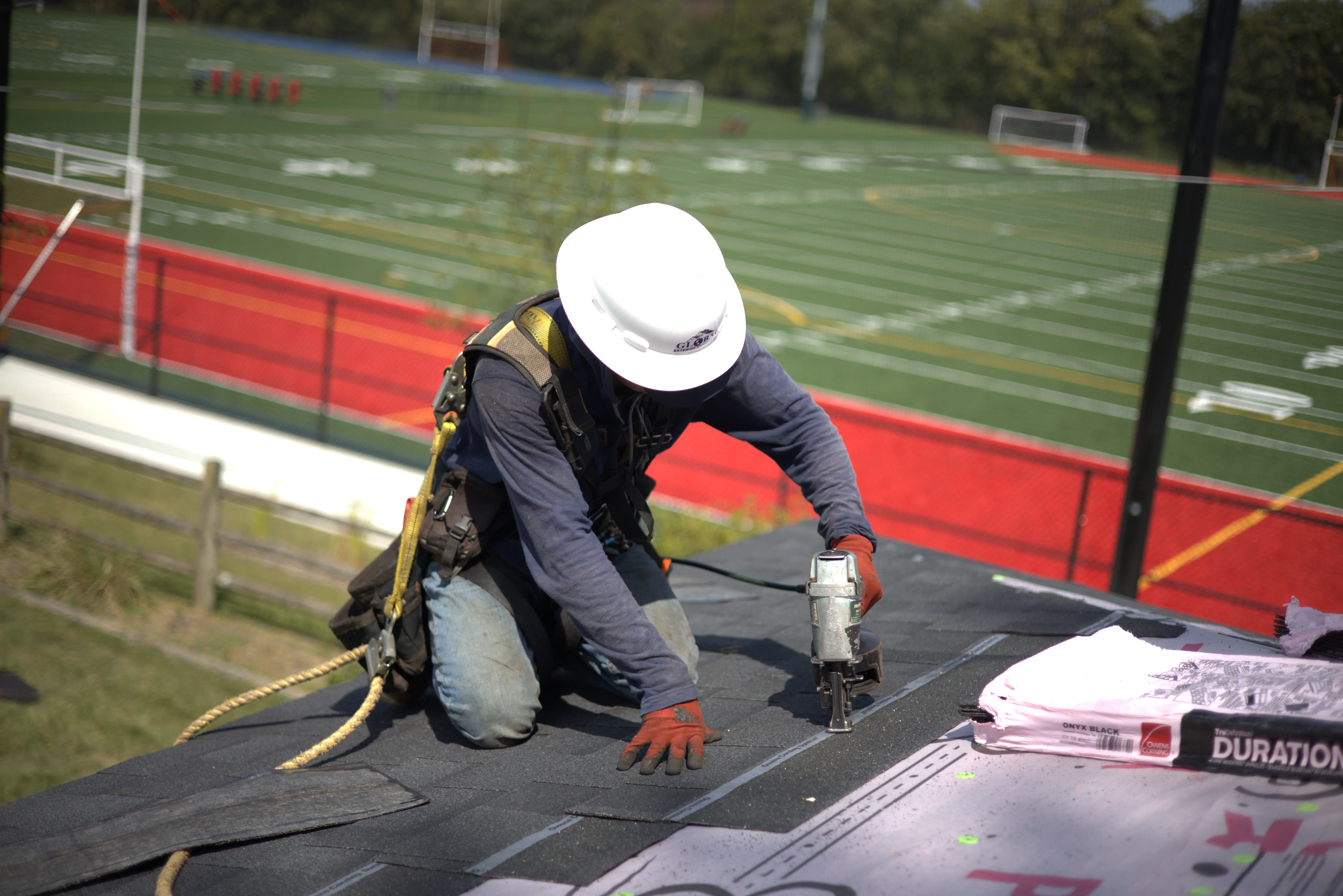
Safety comes first, no negotiations. Roof replacement involves materials being thrown off your roof, crews moving around with heavy equipment, and construction zones that shift throughout the day.
Falling debris is a real concern too, we protect landscaping and driveways but you still need to stay away from the perimeter of your home during tear-off. Shingles, nails, and underlayment pieces will come off the roof fast and nobody can see over the edge to check if someone's walking below.
Keep kids and visitors away from the work area completely. Mark off zones if needed. The driveway becomes a loading zone for the day, not a play area. This applies whether you stay home or not, but if you're there, you're responsible for enforcing these boundaries.
Inside the home, vibrations can knock items off shelves or walls. Take down anything valuable, fragile, or irreplaceable before work starts. Some roofing companies include liability clauses in contracts that limit responsibility for property damage so protect what matters.
What About Pets and Kids?
Pets don't handle roof replacement well. The constant noise, strange people on the property, and disruption to routine stress animals out. Cats typically hide and refuse to eat. Dogs bark at every sound or pace anxiously.
If your pet freaks out during thunderstorms or fireworks, they'll hate this. Find somewhere else for them to stay for the day. A friend's house, a pet daycare, or a family member's place works. Trying to comfort a panicked animal while crews are working overhead makes an already stressful day worse.
Kids present similar challenges. Young children won't understand why they can't go outside or why the house is shaking. School-age kids will be curious and want to watch which will create a safety concern. Teenagers working from home will struggle with the noise too, just like adults.
If possible, plan the roof replacement for a day when kids are at school or arrange for them to be elsewhere. It simplifies everything.
Preparing Your Home (Inside and Out)
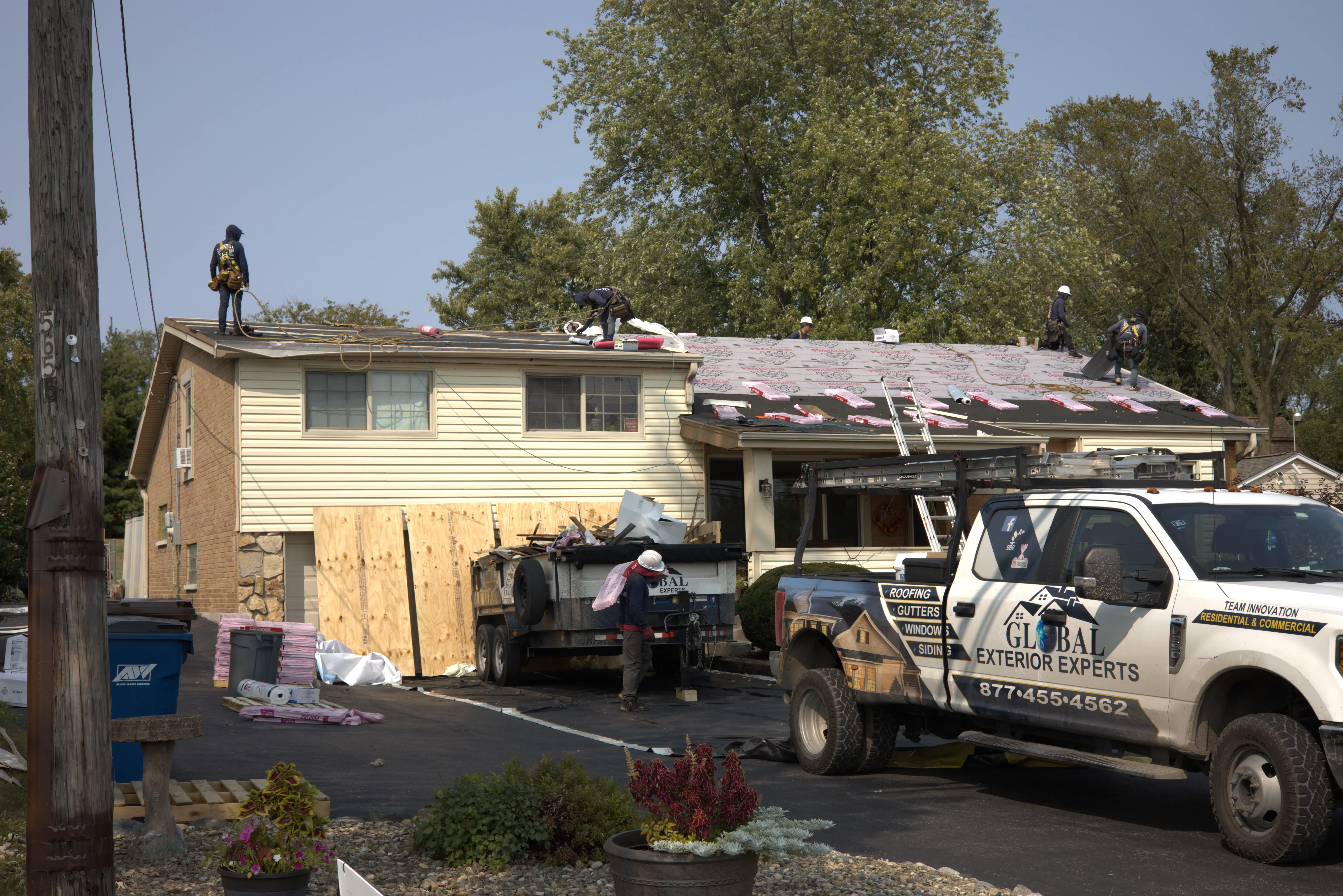
Preparation makes the actual roof replacement day run smoother. Start inside your home 48 hours before crews arrive.
Remove wall hangings, especially in rooms directly below the roof. Framed pictures, mirrors, and shelves with collectibles need to come down. The vibration from roofing work can loosen picture hooks and knock items off shelves. Better safe than sorry.
Cover furniture in the attic if you have stored items up there. Dust and debris will filter through, even with tarps. Everything you care about should be covered or moved somewhere else.
Clear your driveway and garage completely because we just need space for the dump trailers, material deliveries, and crew vehicles. If your car is blocking access, work has to stop while everything gets moved. That delays the project and might push completion into the next day.
Outside, trim back tree branches within 10 feet of the roof if possible. Move patio furniture, grills, and planters away from the house perimeter. Cover or relocate anything you don't want covered in roofing debris. Also make sure you protect your AC unit we do this, but some companies don't.
Walk your property the day before and take photos of existing damage. Document any cracked window screens, damaged gutters, or landscaping issues. This protects both you and the roofing company if questions come up later about any specific damage.
Timeline: What Actually Happens on Roof Replacement Day
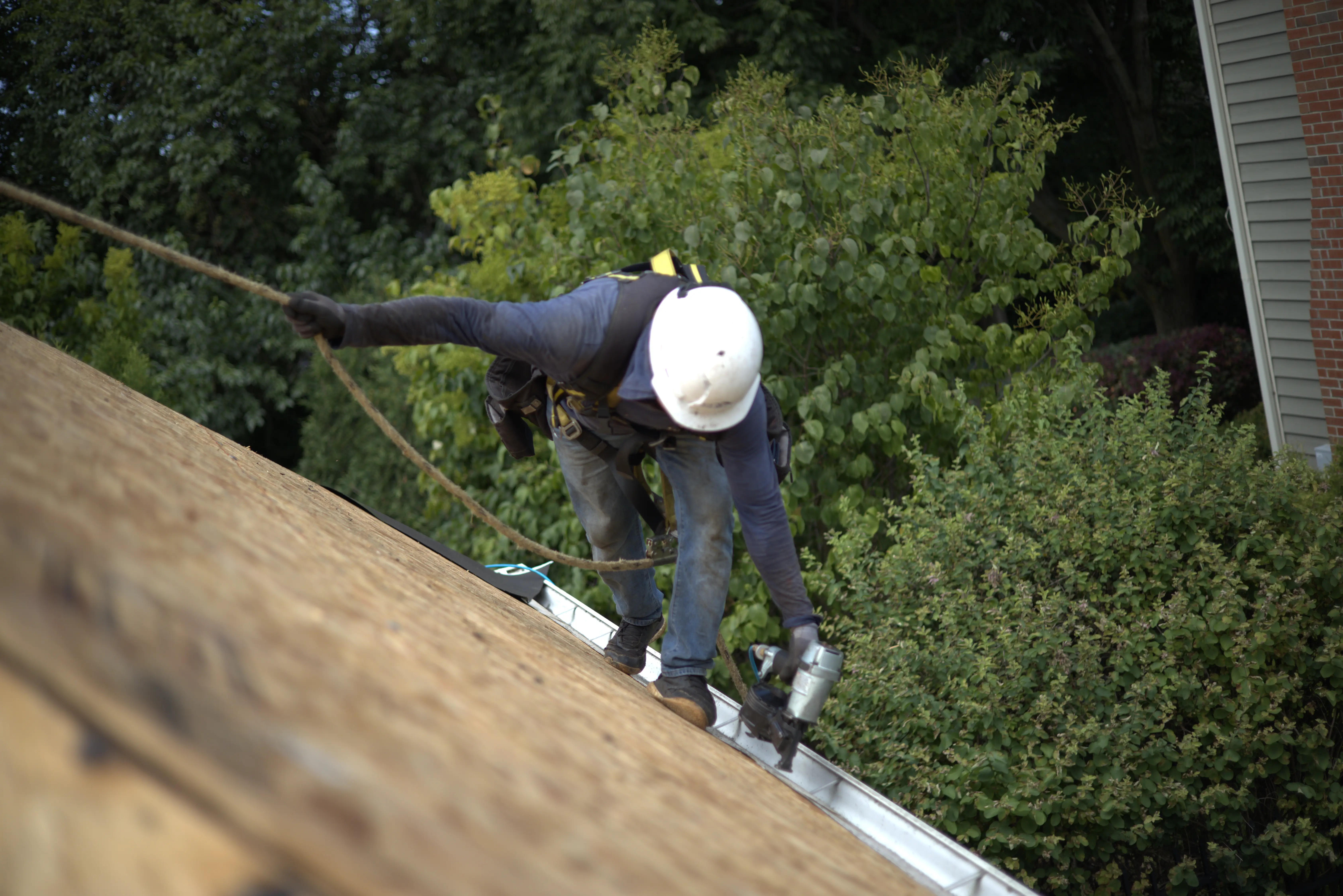
Most residential roof replacements in Illinois take one to two days. Single-story homes with straightforward layouts often finish in one long day (10-12 hours). Two-story homes with complex roof designs or homes with multiple layers of old roofing take longer.
Crews typically arrive between 7:00-8:00 AM. The first hour involves setting up equipment, laying tarps, and starting the roof tear off process. This is when noise begins and doesn't stop until the old roof is completely removed.
Tear-off can usually takes 3-5 hours depending on your roof's size and how many layers need removal. Illinois building codes allow up to two layers of asphalt shingles before requiring a complete removal but most roofing companies recommend going down to the deck. You'll see why once tear-off starts and any hidden damage becomes visible. Not to mention roof decking repairs can be costly especially when they're caught 30 years after the initial leak happened.
After tear-off, crews inspect the roof deck for soft spots, water damage, or areas needing repair. This is when surprises happen. Illinois winters are brutal on roofs, and ice dams cause damage that isn't visible until the old shingles come off. Budget extra for repairs if your roof is over 20 years old.
New underlayment goes down next, followed by drip edge, valley flashing, and step flashing around chimneys and walls. Then shingle installation begins. This phase is methodical and slightly quieter than tear-off, but still noisy.
Final cleanup happens at the end. Magnetic rollers pick up nails from your driveway and yard. Tarps get removed. Debris goes in the dumpster. A final inspection ensures nothing was missed.
If weather interrupts the project (thunderstorms are common in Illinois summer afternoons), crews will tarp the roof and resume when conditions improve. This can extend a one-day job into two or three days.
When You Should Definitely Leave
Some situations make staying home impractical or impossible. If any of these apply, just plan to be elsewhere during roof replacement.
You work from home with scheduled calls or meetings: The noise makes phone conversations impossible and video calls pretty unprofessional. Reschedule or work from a coffee shop, library, or coworking space for that day.
You have noise sensitive health conditions: Migraines, sensory processing issues, or conditions that worsen with stress mean the constant banging will be miserable, just leave in this case for your own wellbeing.
You have infants or toddlers at home: Young children need naps and routines, unfortunately roof replacements destroy both. The noise will wake sleeping babies and make normal activities impossible.
Your home has known structural issues: If your roof deck is in questionable condition or you've had water damage, the tear-off process will be rougher. More vibration means more disruption inside.
You live in a historic home or one with plaster walls: Older homes with plaster and lath construction experience more vibration than modern drywall homes. Plaster can crack from the shaking, and repairs get expensive.
Cost Considerations A Roof Replacement in Illinois
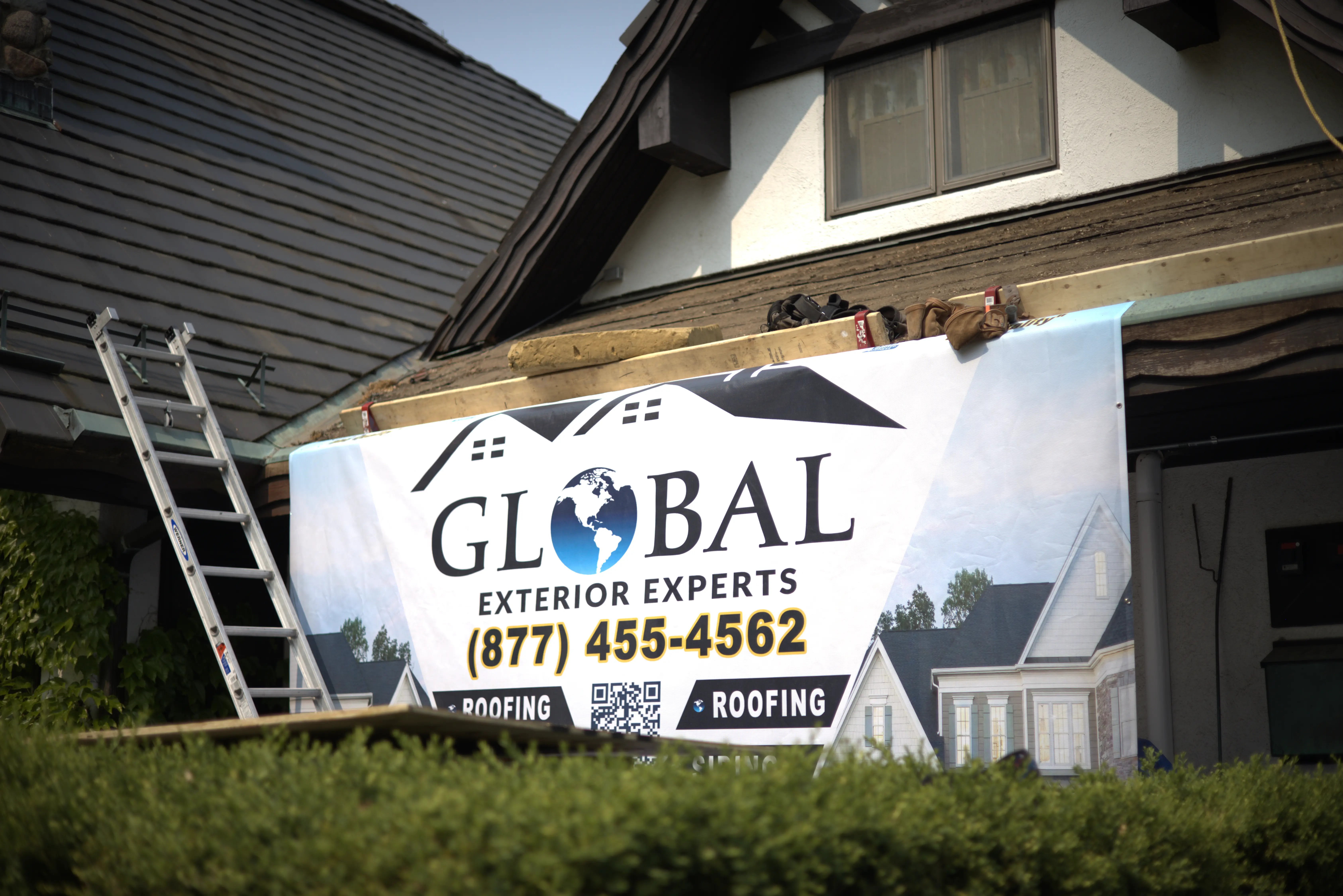
Roof replacement costs vary based on size, materials, and complexity. In Illinois, expect to pay between $8,000-$25,000 for a typical residential roof replacement. That's a broad range, but here's why.
Single-story ranch homes (1,500-2,000 square feet) with basic architectural shingles typically run $8,000-$14,000. Two-story homes or larger footprints push costs higher, often $15,000-$20,000. Premium materials like designer shingles or metal roofing add 30-50% to the base cost.
Northern Illinois (Chicago suburbs, Rockford, areas near Wisconsin border) typically costs 10-15% more than downstate regions due to higher labor rates and permit fees. Algonquin sits in that higher-cost zone.
Roof pitch matters too, a steeper roof require more safety equipment, take longer to install, and increase labor costs. If your roof is steep enough to need scaffolding or extra fall protection, just know it'll be more for the setup.
Multiple stories, complex designs with valleys and dormers, and homes with multiple roof penetrations (chimneys, skylights, vents) all increase costs. The more complicated your roofline, the higher the price.
Don't forget permits, most Illinois municipalities require permits for roof replacement, typically $150-$500 depending on location. Your roofing company should handle this, but confirm it's included in your contract.
Unexpected costs happen during tear-off when hidden damage appears. Rotten decking, damaged trusses, or inadequate ventilation discovered during the project need immediate repair. Budget an extra 10-15% as contingency for surprises.
Of course, none of this comes free, but Illinois weather makes quality roof replacement a necessity, not a luxury. Cheap roofs fail fast in our climate.
Actionable Steps: Your Pre-Installation Checklist
Alright, let's talk about what you actually need to do. Here's your practical checklist for the 48 hours before a roof replacement:
Two days before:
- Schedule pets to be elsewhere during work hours
- Arrange childcare or plan activities away from home
- Notify neighbors about the upcoming noise and activity
- Take photos of your property's current condition
- Move vehicles out of the driveway and garage
- Trim tree branches close to the roofline
One day before:
- Remove pictures, mirrors, and wall hangings
- Clear items from shelves and mantels
- Cover attic storage items with tarps
- Move outdoor furniture away from the house
- Protect valuable landscaping with plywood or tarps
- Confirm start time and crew arrival with your roofing company
Day of installation:
- Be available by phone but consider leaving the property
- Keep all doors and windows closed (dust and debris will still get in)
- Stay inside and away from windows during tear-off
- Avoid going outside near the work zone
- Be prepared for no internet or power interruptions (rare but possible if connections are on the roof)
Communication with your roofing company matters. Have the project manager's direct number. If questions or concerns come up during installation, you want quick answers.
The Bottom Line: Make the Choice That Works for You
You don't have to leave during a roof replacement but most Illinois homeowners find it easier. The noise, disruption, and safety concerns make staying home more stressful than it's worth for many people.
If you decide to stay just prepare properly, protect your belongings, keep pets and kids away from work zones, and accept that normal activities won't be possible during the day. You won't get work done, the house will shake, and constant noise will test your patience.
If you decide to leave, plan a full day away because most roof replacements last 8-12 hours, sometimes longer if complications arise. Go to work, visit family, or make it a day trip. You'll return to a new roof and avoid the stress.
Either choice works but go in with realistic expectations. Illinois weather already makes roof replacement scheduling challenging. Don't add unnecessary stress by being unprepared.
What to Consider Next
Before signing a contract with any roofing company just confirm their approach to property protection, safety protocols, and cleanup procedures. These details matter as much as price and materials.
Ask about their typical timeline for projects like yours. Weather delays happen in Illinois, so understand how they handle interruptions and partial completions. A professional roofing company will tarp your roof securely if work can't finish in one day.
Verify insurance coverage and licensing. Illinois requires specific licensing for roofing contractors, and your roofing company should carry both liability insurance and workers' compensation. Make sure you don't skip this step.
Get multiple estimates but don't just choose a roofing company based on price alone. The lowest bid often means cut corners, cheap materials, or inexperienced crews. Mid to high range pricing usually indicates quality work with proper materials and experienced installers.
Finally, trust your instincts because If something feels off during the estimate process, look elsewhere. A Roof replacement is a major investment and you deserve a roofing company that communicates clearly, shows up on time, and delivers quality work.

.webp)

